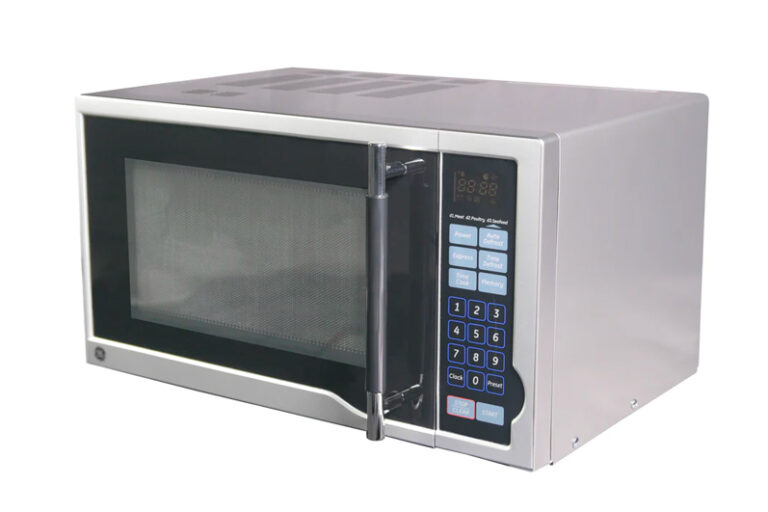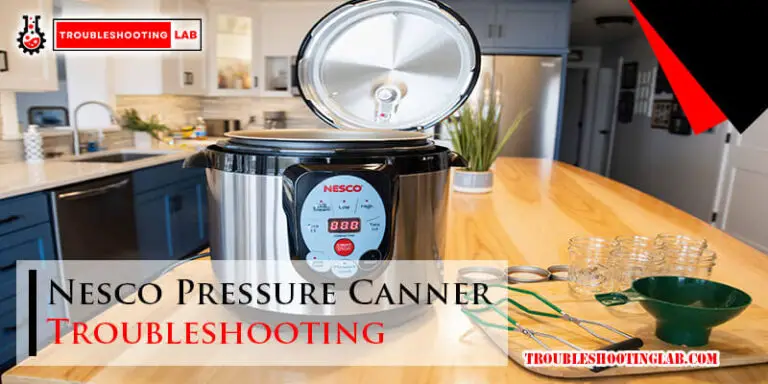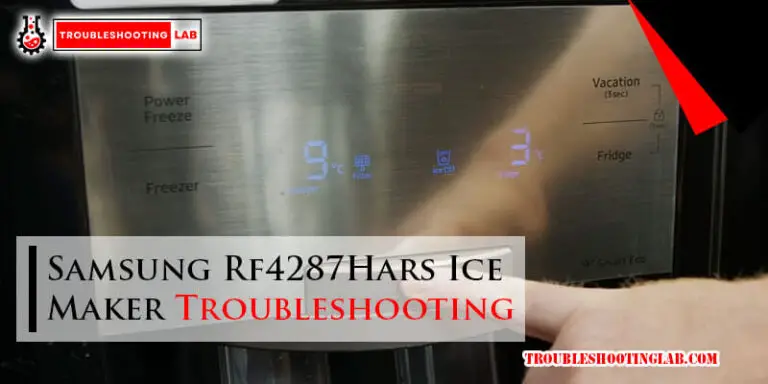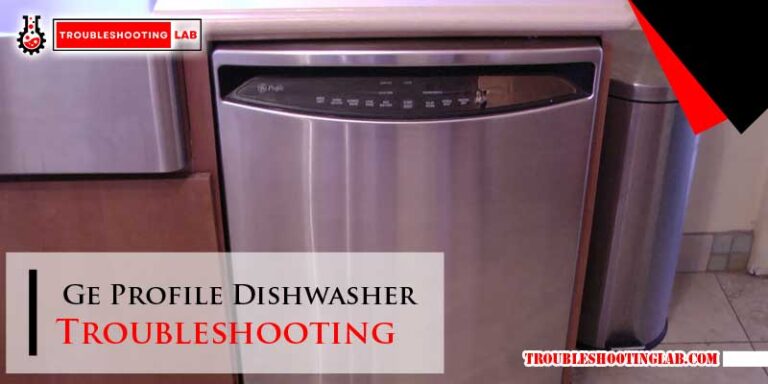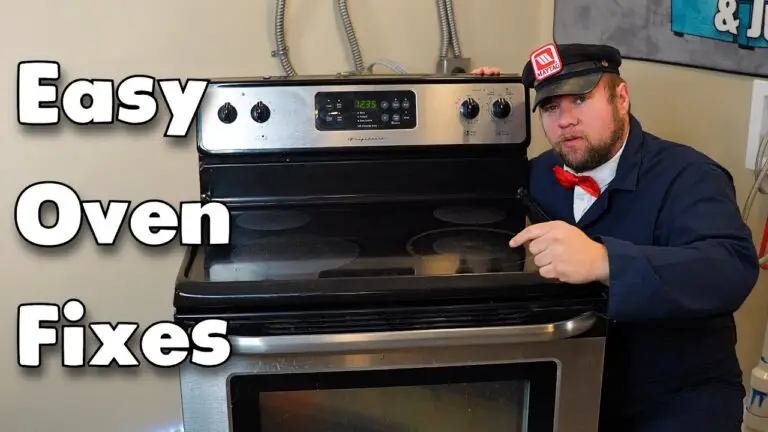Blodgett Oven Troubleshooting: Quick Fixes for Common Issues
For precise Blodgett oven troubleshooting, follow these steps: Check circuit breaker, heating element, door seal, temperature sensor, and igniter. To diagnose oven problems, inspect these components for malfunctions or damage.
Blodgett ovens may not heat properly due to issues with power supply, heating elements, temperature sensors, or control panels. If your electric oven is not reaching the desired temperature, start by checking the circuit breaker for any faults. Issues with the fan in a convection oven may stem from a malfunctioning fan and motor assembly or a faulty heating element.
By troubleshooting these common problems, you can ensure your Blodgett oven operates efficiently.

Introduction To Blodgett Oven Issues
Blodgett ovens are known for their durability and efficiency, but like any other commercial kitchen equipment, they can experience issues that can affect their performance. Being able to recognize common problems and taking precautionary measures can help prevent safety hazards and avoid costly repairs. In this section, we will discuss the most common Blodgett oven issues and how to troubleshoot them.
Recognizing Common Problems
Here are some of the most common issues that Blodgett oven users encounter:
- The oven is not heating up
- The oven is overheating
- The oven door won’t close properly
- The pilot light won’t stay lit
- The oven is producing uneven heat
- The oven is making strange noises
Safety First: Precautionary Measures
Before attempting to troubleshoot any issue with your Blodgett oven, it is important to take the following precautionary measures:
- Turn off the oven and unplug it from the power source
- Wear protective gloves and eyewear
- Allow the oven to cool down before inspecting it
- Read the user manual and follow the manufacturer’s instructions
- Don’t attempt to repair or replace any part of the oven if you’re not qualified to do so
By recognizing common problems and taking precautionary measures, you can ensure the safety of yourself and your kitchen staff, as well as prolong the lifespan of your Blodgett oven.
When The Oven Won’t Heat
When your Blodgett oven fails to heat up, troubleshooting the issue promptly is crucial to ensure uninterrupted cooking operations. Below are some steps to follow when encountering this problem.
Checking The Power Supply
Ensure the oven is properly connected to a functioning power source. Check for any loose connections or tripped circuit breakers.
Inspecting The Heating Elements
Examine the heating elements for any signs of damage or wear. Replace any faulty elements to restore the oven’s heating functionality.
Assessing The Igniter And Gas Flow
Verify that the igniter is working correctly and that there are no obstructions in the gas flow. Proper ignition and gas supply are essential for the oven to heat up efficiently.
Uneven Cooking Or Temperature Woes
When your Blodgett oven is causing uneven cooking or experiencing temperature discrepancies, it can lead to frustrating outcomes in your kitchen. Addressing these issues promptly is crucial to maintaining the quality and consistency of your culinary creations.
Calibrating The Thermostat
To ensure precise temperature control, calibrating the thermostat is essential. Follow these steps to calibrate your Blodgett oven’s thermostat:
- Obtain a reliable oven thermometer for accuracy.
- Set the oven to a specific temperature and allow it to preheat.
- Once preheated, compare the oven’s temperature reading with the thermometer’s reading.
- If a variance exists, refer to the oven’s manual for instructions on adjusting the thermostat.
Testing The Temperature Sensors
Testing the temperature sensors is a crucial step in troubleshooting temperature irregularities. Here’s how you can perform this test:
- Locate the temperature sensor within the oven.
- Use a multimeter to measure the sensor’s resistance while the oven is off and cool.
- Compare the resistance reading with the manufacturer’s specifications to determine if the sensor is functioning correctly.
- If the sensor’s resistance deviates significantly from the specified range, it may need to be replaced.
Convection Fan Failures
When the fan in your convection oven is not functioning properly, it can lead to issues with the overall heating performance. Diagnosing and troubleshooting these fan failures is crucial for maintaining the optimal functionality of your Blodgett oven.
Diagnosing Fan And Motor Issues
If you encounter problems with the convection fan, the first step is to diagnose whether the issue lies with the fan itself or the motor. This can be determined by conducting a thorough inspection of the fan blades and the motor assembly. Look for any signs of damage, blockages, or unusual noise during operation. Additionally, check the electrical connections to ensure they are secure and free from corrosion or damage.
Troubleshooting The Heating Element By The Fan
One common cause of convection fan failures is a malfunction in the heating element located near the fan. To troubleshoot this issue, carefully examine the heating element for any visible signs of damage, such as discoloration or breakage. Test the continuity of the heating element using a multimeter to determine if it is functioning within the specified parameters. Additionally, check for any obstructions that may be affecting the airflow around the heating element.
Control Panel Glitches
When troubleshooting your Blodgett oven, encountering control panel glitches can be frustrating. Here are some steps to address these issues:
Ensuring Proper Power Settings
One common cause of control panel glitches is improper power settings. Ensure that the oven is receiving adequate power supply by checking the circuit breaker and the outlet. If the oven is not heating, it could be due to a tripped circuit breaker or a faulty power source.
Resetting The Control Module
If the control panel continues to malfunction, resetting the control module may help. To do this, locate the control module and follow the manufacturer’s instructions for resetting it. This can often resolve minor glitches and restore the proper functioning of the control panel.
Door Problems Impacting Performance
When it comes to the performance of your Blodgett oven, door problems can have a significant impact. Issues with the door seals, hinges, or latches can lead to heat loss, uneven cooking, and decreased energy efficiency. It’s important to address these door-related issues promptly to ensure optimal functionality of your oven.
Inspecting Door Seals
Properly functioning door seals are crucial for maintaining the internal temperature of the oven and ensuring even cooking. Inspect the door seals regularly for any signs of wear, tear, or damage. Look for gaps or areas where the seals are not making full contact with the oven frame. Replace any worn or damaged seals to prevent heat loss and maintain the efficiency of your oven.
Adjusting Hinges And Latches
Loose or misaligned hinges and latches can cause the door to not close properly, leading to heat escape and uneven cooking. Regularly check the alignment and condition of the hinges and latches. Tighten any loose screws and adjust the alignment to ensure that the door closes securely and maintains a tight seal when the oven is in use.
Preventative Maintenance Tips
Learn how to troubleshoot your Blodgett oven with these preventative maintenance tips. Check for issues such as a tripped circuit breaker, faulty heating element, or malfunctioning temperature sensor to keep your oven running smoothly and efficiently. Regular maintenance can help prevent costly repairs and downtime.
Regular maintenance is crucial to keep your Blodgett oven running smoothly. By following these preventative maintenance tips, you can ensure optimal performance and extend the lifespan of your oven.
Regular Cleaning Routines
- Clean oven interior and exterior surfaces regularly to prevent build-up.
- Remove food debris and spills promptly to avoid potential damage.
- Check and clean air vents to maintain proper airflow.
- Inspect gaskets and seals for wear and tear, replacing if necessary.
Scheduled Professional Inspections
- Arrange regular professional inspections to detect any issues early on.
- Have a technician check electrical components for optimal functionality.
- Calibrate temperature settings to ensure accurate cooking results.
- Schedule routine maintenance to prevent breakdowns and costly repairs.
Remember, investing time and effort in preventative maintenance can save you from unexpected downtime and expenses in the long run.
Seeking Professional Help
For efficient Blodgett oven troubleshooting, seek professional help to diagnose issues like heating failure, pilot valve problems, or electrical malfunctions. Expert technicians can swiftly identify and resolve technical faults to ensure your oven operates smoothly.
When To Call A Technician
Sometimes, despite your best efforts, troubleshooting your Blodgett oven may prove to be a challenging task. In such cases, it is best to seek professional help. But how do you know when it is time to call in a technician? Here are some signs that indicate it is time to seek professional help:
- The oven is not heating up at all or is not heating up to the desired temperature
- The oven is making strange noises
- The oven is emitting strange odors
- The oven is displaying error codes
- You have exhausted all the troubleshooting steps mentioned in the user manual
If you encounter any of these issues, it is best to call a qualified technician to diagnose and fix the problem.
Warranty And Service Information
If your Blodgett oven is still under warranty, it is recommended that you contact the manufacturer’s customer service department for assistance with troubleshooting and repairs. If your oven is no longer covered by the warranty, you can contact a certified technician to diagnose and fix the problem.
It is essential to ensure that you hire a technician who is experienced in working with Blodgett ovens. You can check the manufacturer’s website for a list of authorized service providers in your area.
In conclusion, seeking professional help is sometimes necessary when troubleshooting your Blodgett oven. Knowing when to call a technician and understanding your warranty and service options can help you quickly and efficiently resolve any issues with your oven.
Troubleshooting Resources
Troubleshooting resources for Blodgett oven issues include checking the pilot valve, main valve, relay, and motor for potential problems. Additionally, inspecting the schematic, power supply, and propane tank can help resolve heating and lighting issues effectively. Checking the circuit breaker and temperature sensor is crucial for diagnosing oven heating problems accurately.
User Manuals And Guides
Access user manuals and guides to troubleshoot your Blodgett oven effectively.
Online Support And Videos
Utilize online support and instructional videos to resolve any issues with your Blodgett oven.
Frequently Asked Questions
Where Is The Fuse On A Blodgett Oven?
The fuse on a Blodgett oven is located in the electrical panel or control box.
How To Diagnose Oven Problems?
Diagnose oven problems by checking circuit breaker, outlet, heating element, oven seal, temperature sensor, and igniter.
Why Is My Electric Oven Not Getting Up To Temperature?
Possible causes for an electric oven not getting up to temperature include electrical supply disruptions, broken heating elements, faulty temperature sensors, and a malfunctioning control panel. Check the circuit breaker for a blown fuse and inspect the heating element, oven door seal, and temperature sensor.
If the issue persists, seek professional help or refer to manufacturer troubleshooting guides.
Why Is The Fan Not Spinning On My Convection Oven?
The fan on your convection oven may not spin due to a malfunctioning fan and motor assembly or heating element.
Conclusion
In troubleshooting your Blodgett oven, it’s important to consider various factors such as power supply, heating elements, and temperature sensors. By carefully inspecting and testing these components, you can identify and resolve issues with your oven’s heating functionality. Remember to follow safety guidelines and consult a professional when needed.


